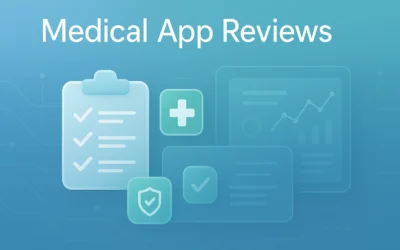Oh, this age of digital technologies… Every piece of our private personal data is stored on the mobile gadgets, making us vulnerable and exposed to thieves and hackers. Sure, app stores always promise us protection and total security, but no matter how strongly do we want to believe that our iPhones or smartphones are more secure than the usual wallets, the reality and multiple studies shows that our sensitive information is, in fact, in constant danger. Is it due to the developer’s overlooking or anyone else’s, it’s not that important. The thing is that every mobile app development company must have a team of security and quality engineers, whose responsibility is the mobile application security testing – the symbol of our future and the brand’s reputation. If the app is weak and available for easy hacking… well, that its creator will be doomed from the day one.
So, let’s see, what does it mean, to test mobile app for security vulnerabilities?
Security for Mobile Applications. Quick tips about basics
Tip 1. Investigation. What are the sources of the common app’s security flaws?
Besides the rush to launch the app as quick as possible, therefore, the loss of quality? Pretty big amount of potential vulnerabilities is hiding in the programming code itself, in the improper mobile platform usage and the liability when it comes to reverse engineering, and so on. Actually, the bedside guide for any developer should be the ‘OWASP Mobile Security: Top 10 Risks’, where you can find all threats that are to be considered on the daily basis. Also, Hewlett Packard Enterprise made a Mobile Application Security Report in 2016, where they provided a thorough analysis of approximately 36.000 apps (from different industries) and the percentage of the flaws that were discovered in the ways those applications collect the user’s data. There are also some handy recommendations for developers on how to avoid the risks as much as possible, so I’d advise to check it out.
Summarizing up, before you start testing, take some time to gather the intelligence: collect as much information about the application and its purpose as possible. It means doing two types of analysis – environmental (internal processes and structures) and architectural (UI/UX design, authentication process, session management, jailbreak/rooting detection, servers, databases, firewalls, etc.).
Tip 2. Know your battle strategy
Any mobile security testing is suggesting, first of all, that you should do a static source code analysis on the early stages of the software development life cycle. No excuses, your code – your temple, cherish it and look for the bug every step of the way. It saves a ton of time and money, allowing you to smoothly finish the production process. Don’t neglect any small details, because when it comes to security, you have to broke the boundaries of laziness and think big, look in the places where no one would look, and act like the hackers would act.
How to do it? By following a step-by-step mobile app security assessment procedure, of course:
- Preparations & Data gathering
- Threat Modeling (OWASP Top 10)
- Test Planning & Vulnerability Analysis (Static, Dynamic, and Forensic methods)
- Test Execution & Vulnerability Assessment (variety of security testing tools to find a solution)
- Report Producing with Best Practices to exclude discovered vulnerabilities
During this process, you’ll discover the most satisfying way for you to fix the bugs and improve the protection mechanisms of the application, just follow the instructions, as they say.
Tip 3. Mobile Application Security Testing Tools. How to choose and use
When you proceed with digital security testing tools, choose wisely. Professionals recommend looking for a solution that will allow discover and fix potential vulnerabilities along with the teaching tricks for you on how to avoid that coding missteps in the future. So, you should search for a combination of static and dynamic analysis, mentioned above. Such fusion of that methods helps to filter out false positives that could be popping on the front when you use only a static analysis. Here is a useful review of the 2017 best security testing tools for you.
And what about how to use the chosen mobile app security testing tools? Some recommendations about the line of actions.
- Explore the app’s working environment – find out what’s the issues you’ll be trying to solve.
- Use a checklist of the most common mobile threats.
- Follow the hacker’s path – be brave to tear your app’s guarding walls apart.
When you’re a developer, you should see a code from its core, define all the key points and how to probe them. Believe me, there is no better way to get valuable results and level up the professional skills, than to attack your own application with the appropriate penetration testing tools.
You’re able to find various penetration testing tools online or by utilizing the services of a pentest company that can test and secure your business network, this can greatly decrease downtime, increase security, and improve business profits overall by negating losses due to security breaches.
Tip 4. Security Testing Checklist – Preparing the Armor
I feel like I should explore this subject a little more closely, ‘cuz it is the bulletproof west of the mobile developers whose goal is to ensure app’s security.
Approximate checklist to securing your mobile apps looks like this:
- Assuring strong authentication (passwords and PIN-codes, fingerprints)
- Paying attention to the authorization process (tokenization, two-factor authorization, APIs)
- Secure Data Transferring & Communication channels Encryption (proper coding methods, suitable storage places, TLS / SSL transportation protocols)
- Blocking the external attacks by Input Validation (SQL injection, cross-site scripting, DOS attacks, memory and info leakage etc.)
- Track the user’s activity (log-in messages, users’ sessions recording)
- Prevention of the data leakage (private mobile workspaces providing, watermarks for confidential files with usernames or timestamps etc.)
But, trust me, it’s just a sketch of what you can put there, not to mention that for iOS and Android platforms there are some variables, that differs the testing tactics. So, don’t skip this one and learn more about
Tip 4. Effective Methodology equals Effective Testing!
There is no such thing as a defined type of a mobile application security testing methodology, but OWASP is making a good progress presenting their awesome Mobile Security Project with the thorough description of each step and stage of different analysis.
There are many tools for source code probing, sandboxes for the apps, and the old-fashioned manual analysis. All three types of tests need to be performed if you wish to uncover everything that matters. Here, I want to give you just a quick examination of the test’s types that you should use.
- Automated testing for basic coverage – checking for improper certificate validation, user’s verification, wrong sensitive data storing, and personal information saved in the device logs.
- Manual testing of the whole attack surface – covers forensic and code analysis, reverse engineering and network analysis, web penetration testing and data recovery.
- Comprehensive testing – complex app security testing based on both static code analysis and regular dynamic scans, without interfering with the software innovations.
- End-to-end security assessment of a source code, binaries, and the running application itself for discovering the vulnerabilities of the client, network, and server layers.
- Real-world environment testing – starts after full installation of the app to use it as it would be actually used by customers.
- Malware discovery – standard and premium mobile scans in a real-world environment with producing of the behavioral information reports and deep malware inspections.
Afterword
For business companies, especially startups, it’s wise to hire custom mobile development agencies that have skilled teams of professionals in the field of app’s security. For a reasonable price, they will provide you with the expert services of the mobile application security testing, checklists development, and testing tools selection. In this case, the relationships between developers and their clients are built on pure trust and reliance, and the end result is represented by a fully secure trustworthy application.












